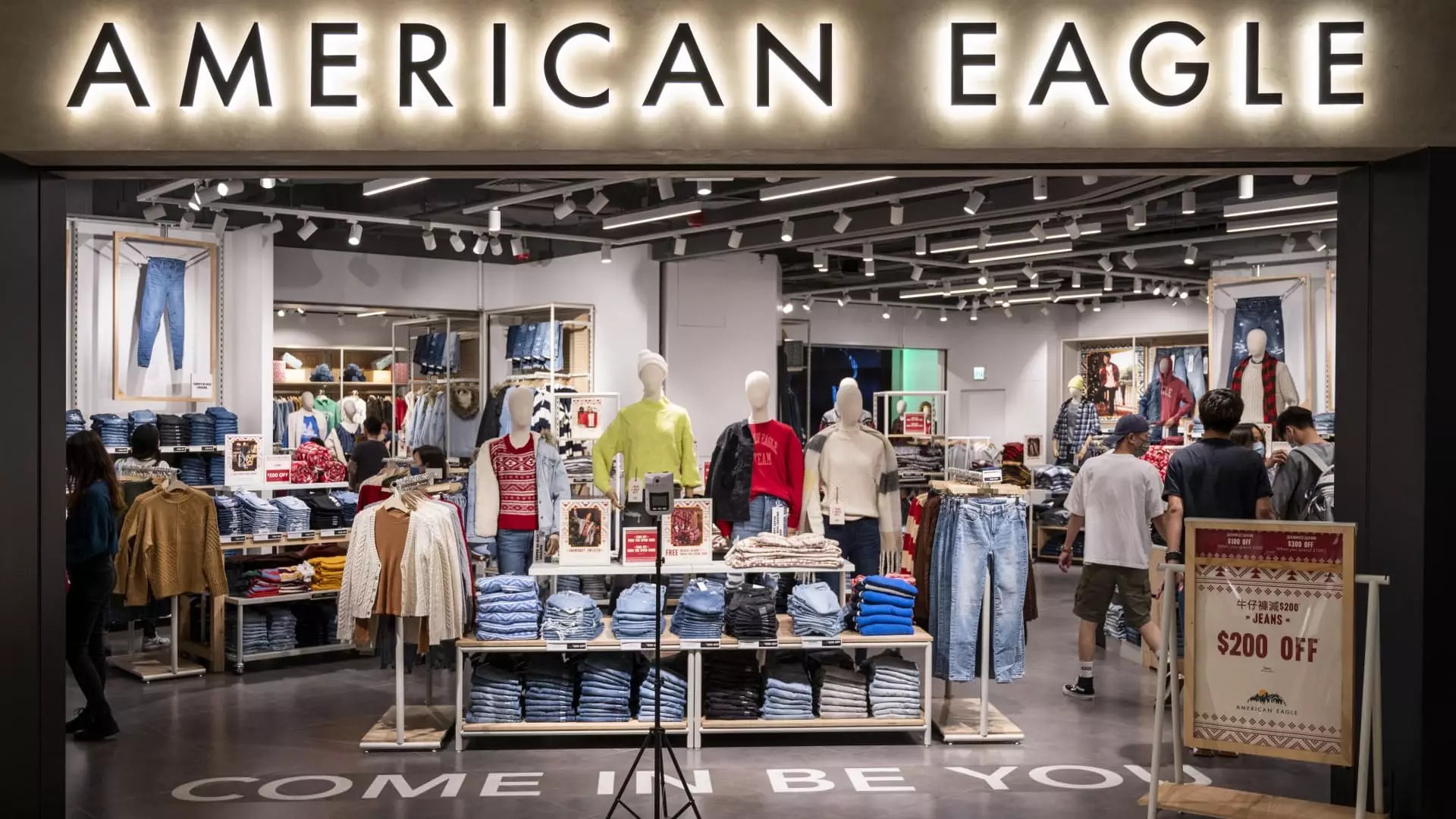American Eagle Outfitters, a staple in the apparel market, has recently issued a stark warning to investors, highlighting a troubling trend in consumer behavior as the nation heads toward 2025. The company’s CEO, Jay Schottenstein, noted a “slower start” to the year than anticipated, attributing this to persistent inflation and unpredictable weather patterns. This pessimistic outlook raises questions about the broader economic landscape and consumer confidence, which appears to be crumbling under stress. The downtrodden forecasts have led to a nearly 5% nosedive in the company’s share prices during after-hours trading—a clear red flag for anyone keeping an eye on retail.
Unpacking the Financials
Diving deeper into American Eagle’s recent financial performance, we find a mixed bag of results. In their fiscal fourth quarter, the company matched analyst expectations with earnings per share of 54 cents and revenues that hovered around $1.60 billion. While this suggests stability, the results also mask a dwindling growth rate; sales declined slightly compared to the previous year. A key point to note is that although comparable sales were up by 3%, this is against a backdrop where other retail giants are still navigating headwinds that threaten their bottom lines. Aerie, the brand’s intimates line, appears to be the lone bright spot, pushing the needle forward even as the flagship nameplate treading water.
The Climate of Caution
American Eagle’s findings mirror trends across a spectrum of other retailers, indicating widespread caution in the marketplace. Many industry players, ranging from robust brands to those fighting for survival, are echoing concerns regarding a potential slowdown in consumer spending. These murmurings have been exacerbated by external economic factors, particularly rising inflation and the government’s trade policies, particularly under the past administration. Such factors create a perfect storm for discretionary spending; when people’s wallets feel pinched, clothing often takes a backseat to essential goods.
It’s not just American Eagle expressing vulnerability. Recent data highlights a nationwide decline in consumer confidence—the most significant drop since 2021—which tends to correlate closely with retail performance. Coupled with stagnant job growth and a slight uptick in unemployment, the signs are becoming increasingly ominous, hinting that retail’s renaissance may be short-lived.
Long-Term Consequences
The implications of this slowdown reach far beyond American Eagle and its investors. Industries reliant on consumer discretionary spending are set to feel the ripple effects as consumption contracts. Are we witnessing the early stages of a recession? With consumer habits shifting rapidly, particularly among younger demographics who have been the traditional customer base for brands like American Eagle, the company will likely need to pivot rapidly to maintain relevance.
If American Eagle is to reclaim its footing, it needs to examine its strategic plan through a lens of acute urgency. Managing inventory and reducing expenses are necessary steps, but these strategies need to align with a stronger understanding of evolving consumer preferences. As the economic landscape shifts, it becomes crucial for brands to deepen their engagement and expand their offerings. The retail giants that will emerge as the winners in this climate will be those that can adapt swiftly, forging connections not just with products, but with the values that consumers now prioritize.
A Call for Strategic Adaptation
The focus on long-term strategic priorities raises an important question: how proactive will American Eagle be in redefining its market positioning? With warnings of mid-single-digit declines in sales looming, failure to pivot could lead to more pronounced struggles ahead. Instead of waiting for spring to rejuvenate sales, perhaps a reevaluation of their marketing strategies is in order.
Additionally, American Eagle could benefit from leveraging its strong digital presence to further capture the attention of cautious consumers. Online platforms, if optimally utilized, could serve as a battlefield to ensure ongoing engagement and sales—as brick-and-mortar stores face dwindling foot traffic. The retailer must also focus on enhancing customer experiences to foster loyalty and distinguish itself in a saturated market.
As we navigate this turbulent economic landscape, only time will tell whether American Eagle can transform these alarming signals into rallying cries for resilience and innovation—or if it will become yet another casualty of shifting consumer priorities. The stakes are high, and the next few quarters will be pivotal.


Leave a Reply